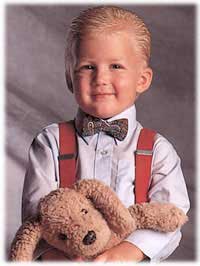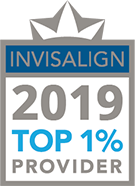Benefits of Early Examination
Age 6-11

Download this page as a handout
Historical Referral Patterns
In their dental education, most general dentists are taught very little about orthodontics. Historically, what they did teach was to observe the malocclusion after the permanent teeth were in position and then refer. This approach is old fashioned and leads to unnecessary removal of permanent teeth, among other problems. Today, orthodontic education in dental school is better, but still not emphasized due to the time needed for the general dentist to master other skills required prior to graduation. The trend continues toward referring children while they have all baby teeth or some baby and some adult teeth (mixed dentition) allowing prevention or minimizing of the malocclusion. This allows the opportunity for each child (your child) to have a much better result.
Dr. Newhart and his orthodontic team continue educate general dentists about advanced orthodontics and to emphasize the benefits of referring children by age 3, 4, 5 and 6. Children need to be seen at young age because the head, face and mouth complete their growth so early… much earlier than the rest of their body!
Growth of the Face and Mouth is the key to Prevention
By Age 3: 70% of facial and mouth growth is complete and 30% remains. Treatment is rarely begun at this age, except in unusual craniofacial situations.
By age 8, 80% of facial and mouth growth is complete and 20% remains. Thus, the orthodontist has only 20% of remaining growth to influence and utilize for dental orthopedic treatment considerations.
By age 13, 90% of growth is complete and only 10% remains to be influenced for prevention. This is too late. We clearly want to have the opportunity to treat your children by age 6-7 or 8-9 at the very latest for most every orthodontic problem that exists for the best outcome.
Advantages of early orthodontic examination include:
- Prevention better than cure – many problems can be intercepted and better treated early, producing benefits that would be more limited with later and more complex treatment.
- Less treatment is needed at this stage to bring the problems under control, compared to waiting until the child is older.
- Increased stability results from early treatment when the bone is soft and more malleable.
- Improved Psychology At these young ages, children are receptive and eager to follow instructions and they respond well to supervision and direction. Most children are excited about their colorful retainers and treatment in general. They are one of our best cooperation groups. In later teen years, the youngster is often less motivated for treatment due to the stigma of social interaction, peer influence and self-esteem concerns.
- Removable Appliances are very effective for treating these orthopedic problems before they become orthodontic problems; fixed appliances are needed only under certain circumstances, resulting in optimum oral hygiene and eliminating any true emergencies.
- Non-extraction treatment Most children can be treated successfully without the need to remove permanent teeth when they have the benefit of Phase I orthopedic treatment. All teeth can usually be saved with a total of 28 teeth in the final treatment result rather than 24 as often occurred when the patient was referred too late for many preventive approaches.
How the Orthodontist Decides if Early Treatment Is Needed
Looking at teeth alone is not enough for an outstanding result. The modern orthodontist must balance and harmonize the facial growth at an early age to benefit the child beyond just having teeth aligned better. Full attention needs to be given to growth of the head, face and mouth to provide the child with outstanding results that are life-lasting.
Many other factors must be considered including assessment of the airway, tongue position, swallowing patterns, oral, thumb or finger habits in addition to other muscular concerns. These need to be diagnosed and managed early.
We look forward to taking care of your child and providing the very best care available anywhere in the world.



